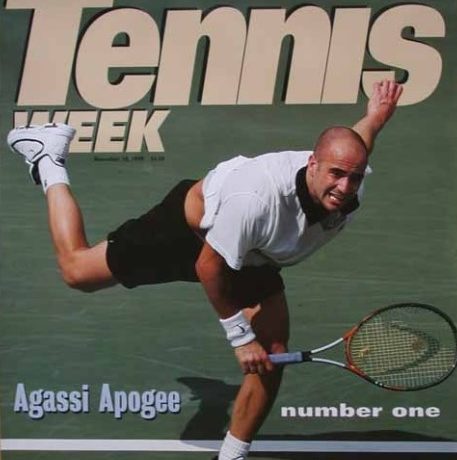
By Tennis Week
1/16/2008 8:32:00 PM
He pounded his palm against his heart repeatedly like a man trying to tattoo his lifeline onto his chest. Vince Spadea, a man who has crafted so many comebacks his career arc resembles a cardiograph, was down two sets and 4-5 in the third to 30th-seeded Radek Stepanek in the opening round of the Australian Open, when the strong-willed Spadea suddenly shocked himself back to life as if jolted by a defibrillator.
Fighting back from the brink of elimination, Spadea scored a 2-6, 2-6, 7-5, 6-2, 6-3, victory and commemorated the moment with an emotional walk around the back of Court 19 where he smacked his hand against his heart.
Spadea had cause for celebration: the win was more than the most compelling comeback of his career it was a career milestone.
Playing in his 49th career Grand Slam tournament, the 33-year-old Boca Raton resident registered his 300th career victory. Spadea’s stirring revival in the opening round was two months in the making. He spent the final two months of 2007 splitting his training time between California and Florida as well as working with long-time sport performance psychologist and his sometime coach Dr. John F. Murray, who recalls a discussion he and Spadea shared with two-time Australian Open champion Jim Courier during a walk around the grounds of Melbourne Park last January as reinforcing Spadea’s mental “cross training.”
“We were talking to Jim Courier last year at this time and Jim turned to Vince and said ‘Vince, at your age, it’s all mental,’ ” Murray said. “Vince goes out there against guys in their 20s and many may think they’re going to show the older guy something, but Vince, who is as healthy as he’s ever been right now, is really in tune to the mental side of the game: he visualizes before he goes out, thinks about the type of tennis he wants to play during the match and never gives up. Vince called me the morning of the Stepanek match and we knew Stepanek would be highly motivated because he had revenge on his mind: Vince beat him in Adelaide last year. It was a huge win on a lot of levels: it was No. 80 in the world vs. No. 30 in the world, Vince beat Igor Andreev in the opening round of Australia last year for his only Grand Slam win of the season so he had points to defend and of course he was going for his 300th win. When you think about how many players have played tennis and how many have actually won 300 matches you get an idea of what a great achievement it is: if you win 300 games in baseball you’re in the Hall of Fame.”
Spadea may not be headed for the hall, but he’s made his mark on tennis history. The strong-willed Spadea has spent his career saying, rapping and achieving the unthinkable. Rebounding from a record 21-match losing streak that saw his 2000 year-end ranking plummet to No. 229, Spadea made a strong comeback. In 2004, Spadea claimed his first ATP title in his 223rd career tournament in Scottsdale, posted a personal best 40-win season and concluded the season ranked a year-end best No. 19.
He got off to one of the best starts of his career last season before being slowed by a groin injury, Murray says he and Spadea have been working on playing in the moment during matches.
“If you even think about winning or losing you’ve already lost; you’ve gotta go out there with a purpose of focusing completely on the point you’re in,” Murray says. “Vince has adopted that mind set. How many points are there in a match: one point and that is the current point. All you’ve got is the moment and once that moment is gone you’ve got another moment, but you have to think and play in the moment.”
Still, Spadea has set goals for the future. Spadea, who has collaborated with Tennis Week contributing writer and noted New York teaching pro Dan Markowitz (Tennis Week.com message board readers know him by the pseudonym Redhead) to write a behind-the-scenes look at life on the ATP Tour titled “Break Point: The Secret Diary Of A Pro Tennis Player”, is working on a book on comebacks with Murray and has set his sights on elevating his ranking.
“The goal is still to be in the top 10 in the world,” Murray says. “I believe if he stays healthy and last year he was off to the second-best start of a season in his career before he got hurt, he can play with anyone. I think Vince is often misunderstood by some who think of him as this crazy guy. He’s more normal than you and me: he works hard and is dedicated to tennis. More than anything he’s got an artist in him. I believe in mental cross training, and I think Vince’s rapping actually helps him in that he’s an artist and it helps him express that side of himself and come back to tennis even more focused and committed.”
Hope you enjoyed this glimpse into the world of sports psychology.

